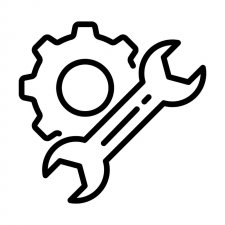Trouble Shooting Vibratory Feeders Part 1 - Declining Feed Rate
There are many causes for the feed rate to decline over time. A common impulse reaction to a feeder not operating at or close to capacity is to turn the controller up. A repetitive pattern of this behavior leads to a controller turned up all the way and performance is no longer being increased. This kind of problem is best solved with a complete disassembly and retuning of the unit. However, the cause of this decline can be isolated and attributed to one or more of the following:
A cracked spring A cracked spring can cause a dead spot, however it can slow down the feeder all around. The crack frequently occurs adjacent to one of the holes in the spring and sometimes is so fine it can only be seen with a magnifying glass. Before inspection, the ends of the spring should be wire brushed or polished with emery cloth. A quick test of the spring is to throw the spring onto a concrete floor with force and usually the spring will break into two pieces if cracked.
A change in the durometer (hardness) of the rubber feet can contribute to poor feeder performance. Rubber feet can harden with age (cure) or soften or swell from environmental conditions such as exposure to petroleum based products and corrosives. The remedy is to replace all the feet.
A cut/slice in a rubber foot can lead to poor performance. Again, the foot must be replaced. Usually the cause is a result of the feeder being dropped or picked up with a lift truck and not setting properly on the forks.
Loose feet can cause this problem. Since the feet are part of the springing system, they must be tight.
Coil Gap Too large of a gap between the coil and the armature can cause low amplitude. This adjustment will be discussed later.
A weld seam on the coil assembly can break. Usually the cause of this is operating the feeder with the armature hitting the coil. After some time, a weld will fail. Sometimes it can be re-welded, although it is be best to simply replace the coil.
Rust or oxidization between the springs and spacers indicates corrosion between the springs and spacers. This will cause low amplitude. When this is detected it is necessary to disassemble, clean, and retune the drive unit.
The absence of a shell or cover can cause low amplitude. The feeders manufactured by Automation Devices, Inc. are tuned for use with the shell in place. Removal of it, especially on some larger models, can cause a severe loss of amplitude.


